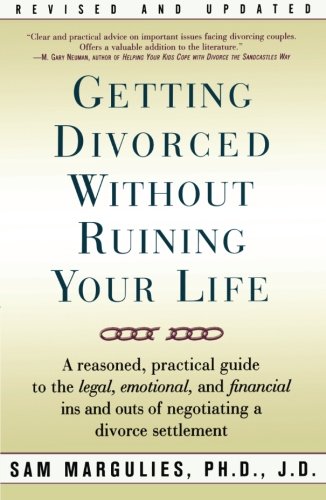
Sam Margulies, Ph.D., Getting Divorced Without Ruining Your Life
Sam Margulies’ book is one of the best books on divorce on the market. It is a must-read for spouses contemplating separation. The first part provides an overview of the economic, legal, and emotional landscape of divorce. It also explains the roles of lawyers, mediators, and other professionals. The second part describes how couples can successfully negotiate an agreement resolving issues of joint parenting, child support, alimony, and the distribution of marital property. Finally, Margulies offers solid advice on how couples can manage conflict after their divorce.
For advice tailored specifically to men going through separation and divorce, we also recommend Margulies’ A Man’s Guide to a Civilized Divorce: How to Divorce with Grace, a Little Class, and a Lot of Common Sense.
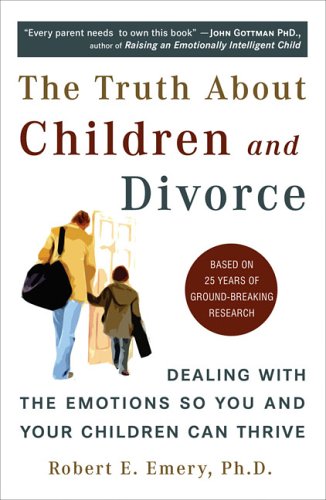
Robert E. Emery, Ph.D., The Truth About Children and Divorce: Dealing with the Emotions So You and Your Children Can Thrive
Dr. Robert Emery is a professor of psychology and the director of the Center for Children, Families, and the Law at the University of Virginia. He is the author of more than 100 scientific publications and several books. His research focuses on family relationships and children’s mental health, including parental conflict, divorce, child custody, family violence, and legal and policy issues.
The Truth summarizes insights derived from Dr. Emery’s 25+ years of experience as a researcher, therapist, and mediator. It teaches parents how to manage the flood of emotions – the cycle of grief and other strong, often overwhelming feelings – that accompany separation and divorce. It reminds grieving spouses that their ultimate goal should be a detached and businesslike relationship when it comes to each other, but a loving and supportive co-parenting relationship when it comes to their children. Chapters are devoted to debunking the myth of resilience, talking to children about separation, developing parenting plans based on age and maturity, and becoming authoritative parents. It offers practical suggestions about what co-parenting arrangements are most likely to succeed in cooperative, distant, and angry divorces, and how to introduce children to new relationships. Dr. Emery’s style is compassionate and forgiving, and he urges his readers to never give up, to take the long view, to maintain their integrity, and to be hopeful for the future.

Robert E. Emery, Ph.D., Two Homes, One Childhood: A Parenting Plan to Last a Lifetime
The sequel to Bob Emery’s groundbreaking book, The Truth About Children and Divorce, Two Homes takes a deeper dive into parenting plans based on children’s needs. In his words, “the only parenting plan that will last a lifetime is one that grows and changes right along with your children’s changing needs.”
Early in the book, Emery outlines an evidence-based Hierarchy of Children’s Needs in Two Homes modeled on Abraham Maslow’s Hierarchy of Human Needs. In addition to meeting their physiological (food and shelter) and safety needs, children need at least one good parent who provides unconditional love and clear, firm and consistent discipline. Higher-order needs include protection from parental conflicts and, when possible, two parents who work together.
Emery forcefully argues that parents should avoid legalistic definitions of joint physical and legal custody in favor of practical parenting plans. A practical plan takes into consideration children’s ages, personalities, schedules, and maturity, as well as the nature of the relationship between their parents. Parents need to be able to reasonably cooperate with each other for joint physical custody to work. When Mom and Dad cannot contain their conflicts in an angry divorce, children can be harmed by joint physical custody.
The remainder of the book involves a detailed discussion of parenting plans tailored to the needs of children. Emery devotes lengthy chapters to infants, toddlers, preschoolers, school-age children, adolescents, and emerging adults. In each, he explains the characteristics of children in that stage of development. He provides recommendations for schedules based on the latest, most comprehensive social science research. He includes helpful advice about how to talk with children about the divorce. And he narrows and refines his recommendations depending upon whether parents divorce during that stage or divorced when their children were younger.
The final chapter of the book is a return to one of the central themes of Emery’s work – that parents must embrace the grief and loss of divorce and then find a way to compartmentalize their burden. At the same time, he urges parents to look forward and “think now about what you will wish you did” years from now. As difficult as it may seem, “[y]ou can start working toward a new long-term now. You can start making deposits into your divorced family’s savings account with the currency of good parenting and goodwill.”
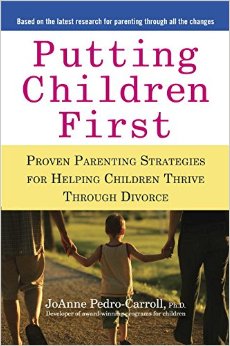
JoAnne Pedro-Carroll, Ph.D., Putting Children First: Proven Parenting Strategies for Helping Children Thrive Through Divorce
This book is one we highly recommend to our clients with children. Right out of the box, Dr. Pedro-Carroll identifies the concerns nearly all children face when their parents separate. Next, she teaches how to respond to those concerns with empathy and love. She debunks the myths of risk and resilience based upon the cumulative research now available to divorce professionals. From that research, she identifies factors that place children at risk of long-term, adverse consequences and factors that influence children’s positive adjustment. In later chapters, she explains how parents can prepare their children for the changes that will occur as a result of the separation. She also addresses how parents can minimize conflict and develop workable co-parenting plans, how they can promote resilience in their children, and how they can become emotionally aware of their children’s needs.
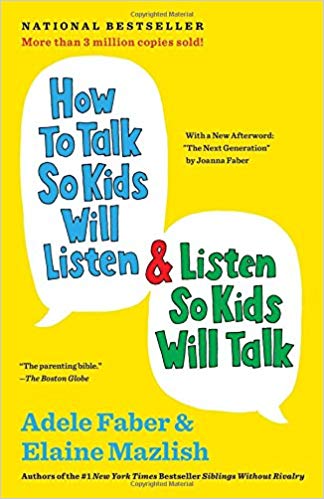
Adele Faber and Elaine Mazlish, How to Talk So Kids Will Listen & Listen So Kids Will Talk and Siblings Without Rivalry: How to Help Your Children Live Together So You Can Live Too (not pictured)
Adele Faber and Elaine Mazlish have written two timeless “how-to” books on communication skills for parents. Both are derived from their experiences as parents and child development specialists. In text and cartoons, they offer examples of helpful dialogues that parents can adapt to their own styles, thought-provoking exercises, and answers to the difficult practical questions posed by parents. How to Talk . . . teaches parents to help their children cope with their feelings, cooperate, and develop autonomy. Other chapters are devoted to teaching how to praise, how to punish, and how to free children from the roles their parents and siblings have inadvertently created. Siblings Without Rivalry deals with the complex dynamics of sibling relationships and teaches parents how to reduce competition and promote cooperation between their children.
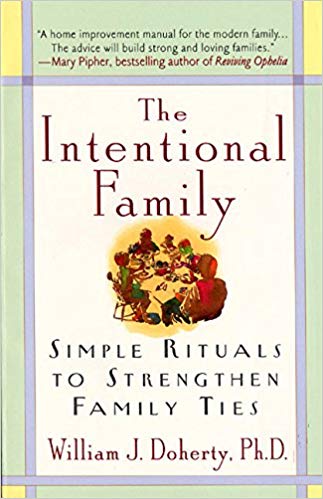
William J. Doherty, Ph.D., The Intentional Family: Simple Rituals to Strengthen Family Ties
“An Intentional Family is one whose members create a working plan for maintaining and building family ties, and then implement the plan as best they can.” This book is all about rituals, those “repeated and coordinated activities that have significance for the family” and bond members together. There are family rituals of connection, of celebration, and of community. Doherty talks in detail about each and provides practical suggestions for how to improve connectedness between family members. One chapter in particular focuses on single parents and remarried families.
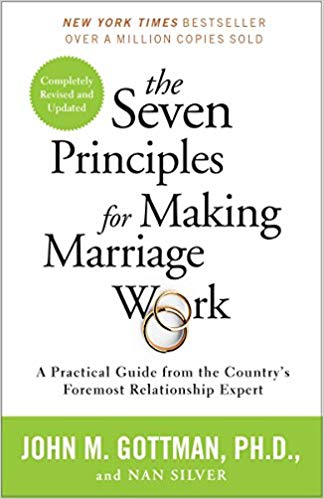
John M. Gottman, Ph.D., and Nan Silver, The Seven Principles for Making Marriage Work
John Gottman, Ph.D., is an expert on marriage stability and predicting divorce. For 40 years, he has studied the relationships of thousands of couples over extended periods of time. Based on this research, after observing a couple interact — by discussing an ongoing disagreement — for just a few minutes, he can predict with 91% accuracy whether their marriage is likely to end in divorce. In this book, he and Nan Silver identify the various clues that a marriage is in trouble. They then identify the traits that couples in successful relationships model. From these observations, Gottman and Silver distill seven principles, posed as directives really, that couples can use to strengthen their friendship and to cope with conflicts. For each principle, the book contains useful exercises that, if performed together, can serve only to deepen a couple’s connection. We highly recommend that couples read this book together.
